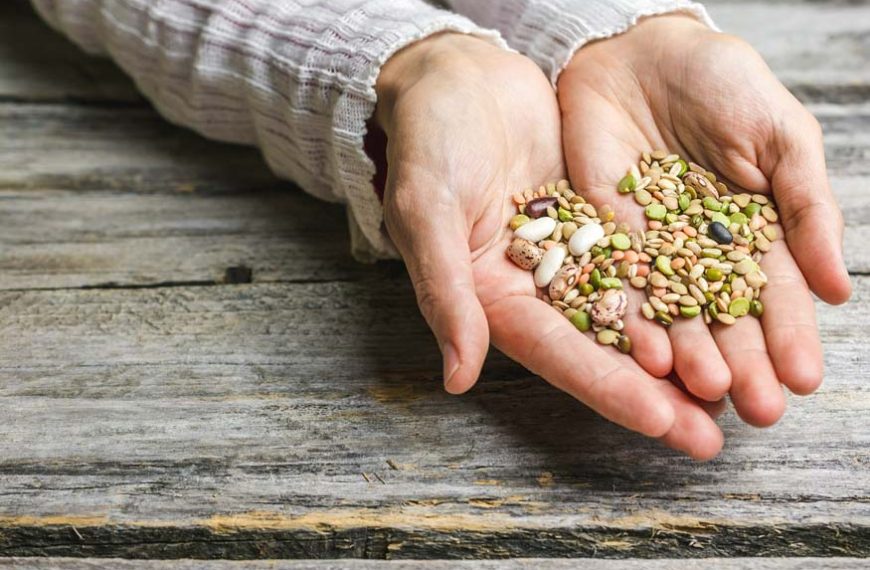A diversified and vital source of nutrients, edible seeds are a fundamental part of many plants and provide a wide range of tastes and health advantages. These little powerhouses have become more recognized for their function in supporting well-being as our understanding of nutrition increases. Moreover, their cultivation frequently follows sustainable methods, highlighting a balance between environmental responsibility and sustenance. Edible seeds are, in short, more than just plants; they are windows into the complex relationships that exist between science, nutrition, and sustainable living. Their inclusion in regular diets denotes not only a flavouring agent but also a vital component that supports human health and the health of the environment.
What are Edible Seeds?
Edible seeds, the edible components of plants, span a spectrum of shapes, sizes, and textures, embodying versatility for culinary application. Their consumption contributes not only to the gustatory experience but also imparts a rich array of essential nutrients, ensuring a well-rounded and healthful diet. From a plant biology standpoint, these seeds are like a drop of hope, holding within them the genetic material that will eventually germinate into new plants.
Nuts, grains, legumes, and seeds contained in fruits are among the many types of edible seeds. A vast range of flavors and sensations result from the diversity of their compositions and structures. This diversity allows for creative culinary applications, making them a fascinating and essential component of our daily meals.
Exploring a Variety of Edible Seeds:
List of Edible Seeds:
Sunflower seeds Pumpkin seeds Sesame seeds Chia seeds Edible Fruit Seeds: Apple seeds Watermelon seeds Pomegranate seeds Edible Green Seeds: Green bean seeds Pea seeds Cucumber seeds
Nutritional Strength and the benefits include
- Fiber for Digestion:
- Energy and Growth:
- Culinary Applications and Interesting Titbits:
- Engaging Trivia:
Edible seeds increase feelings of fullness and facilitate digestion because of their high fiber content. The significant fiber content of chia seeds aids in digestion and promotes fullness, both of which are advantageous for maintaining a healthy weight.
Apart from being nutritious, edible seeds give us lasting energy, help us grow, and keep our bodies well. The healthy fats and proteins in these seeds are important for our brain, and muscles, and maintaining steady energy levels throughout the day. Whether it’s a snack or part of a meal, these seeds are great, especially if we’re active.
Edible seeds, the culinary enchanters of our kitchen, bring a touch of magic to our meals. Add a pleasant crunch and boost the flavor and texture of your salads by tossing in some sunflower seeds. For a healthy dessert, consider making a nourishing custard using chia seeds; their special capacity to turn liquids into a refreshing, gel-like consistency gives your cooking endeavors an intriguing and delightful twist.
Chia seeds boast a unique trick – when immersed in liquid, they morph into a captivating gel-like texture, adding an element of kitchen magic. This distinctive quality not only makes them culinary superheroes but also turns cooking into an enjoyable and educational experience. Being aware of these fascinating facts enhances the delight of working with edible seeds, making every culinary endeavor a blend of creativity and taste exploration.
Types of Edible Seeds:
- Nutrient-Rich Nuts:
- Powerhouse Grain Seeds:
- Plant-Based Protein Champions:
Like little friends for your health, cashews, walnuts, and almonds provide a host of advantages. While walnuts include omega-3 fatty acids that are good for cognitive function, almonds give heart-healthy lipids that enhance cardiovascular well-being.
Grains like quinoa, wheat, rice, and oats quietly enhance our diets, forming the essential basis of a flavourful and satisfying culinary experience while supporting overall health and well-being.
legumes, beans, and peas are examples of plant-based proteins. Because of their high iron content, lentils are a great source of protein over the long term and are especially helpful for vegetarians. Knowing these many seed classes enables us to prepare nutrient-dense meals that improve our health in general.
Sustainable Cultivation Practices:
- Environmental Responsibilities in Edible Seed Production:
- Managing Ecological Issues and Agricultural Practices:
This section examines environmentally friendly agricultural techniques such as organic farming, agroecology, and effective water management. It clarifies how these environmentally friendly methods are essential for maintaining the environment in addition to assisting with human nutrition.
It discusses how to strike an uncertain balance between agricultural productivity and ecological issues. It focuses on mindful farming methods that promote biodiversity, and healthy soil, and reduce the demand for harmful chemicals. It emphasizes how agriculture and the environment must coexist peacefully to ensure the sustainability of the production of edible seeds over the long run.
Culinary Innovations with Edible Seeds:
- Exploring Contemporary Culinary Shifts with Edible Seeds:
- Creative Culinary Uses Beyond Traditional Applications:
It delves into the use of a list of edible seeds in modern recipes by home cooks and professional chefs, exposing emerging trends in the culinary industry. It highlights how edible seeds actively encourage culinary creativity and help chefs adapt to the shifting tastes of the modern palate by doing everything from blending seeds into drinks to creating unorthodox seed-based sweets.
Here, the exploration extends to unconventional uses of edible seeds, beyond their traditional culinary applications. From seed-based condiments to imaginative seed pairings, this subheading showcases how edible fruit seeds can elevate dishes in unexpected and delightful ways. It encourages experimentation in the kitchen and highlights the versatility of edible seeds in contributing to the evolving world of culinary arts.
In ensuring a comprehensive diet, incorporating edible seeds becomes essential, providing diverse flavors and nutritional benefits. Fostering a love for these seeds in children not only promotes healthy eating but also establishes a bond with the natural world. As our knowledge of nutrition advances, the incorporation of seeds into daily meals becomes crucial for personal health and environmental well-being. Exploring the variety of edible green seeds unveils not just delightful culinary options but also a sustainable source of nourishment for both our bodies and the planet.
An important preschool and elementary school provider, EuroKids, incorporates knowledge about edible seeds into its curriculum for young students. Recognizing the value of a healthy diet and nutritional understanding from a young age, EuroKids seeks to make seed education interesting and educational. Through the inclusion of seed facts in their teaching products, EuroKids helps to promote in kids a balanced diet and an awareness of the environment. This approach aligns with their broader goal of providing a comprehensive education that goes beyond traditional subjects, ensuring children gain valuable insights into various aspects of life. Through innovative teaching methods and age-appropriate content, EuroKids emphasizes the significance of nutritious food sources like edible seeds.
















